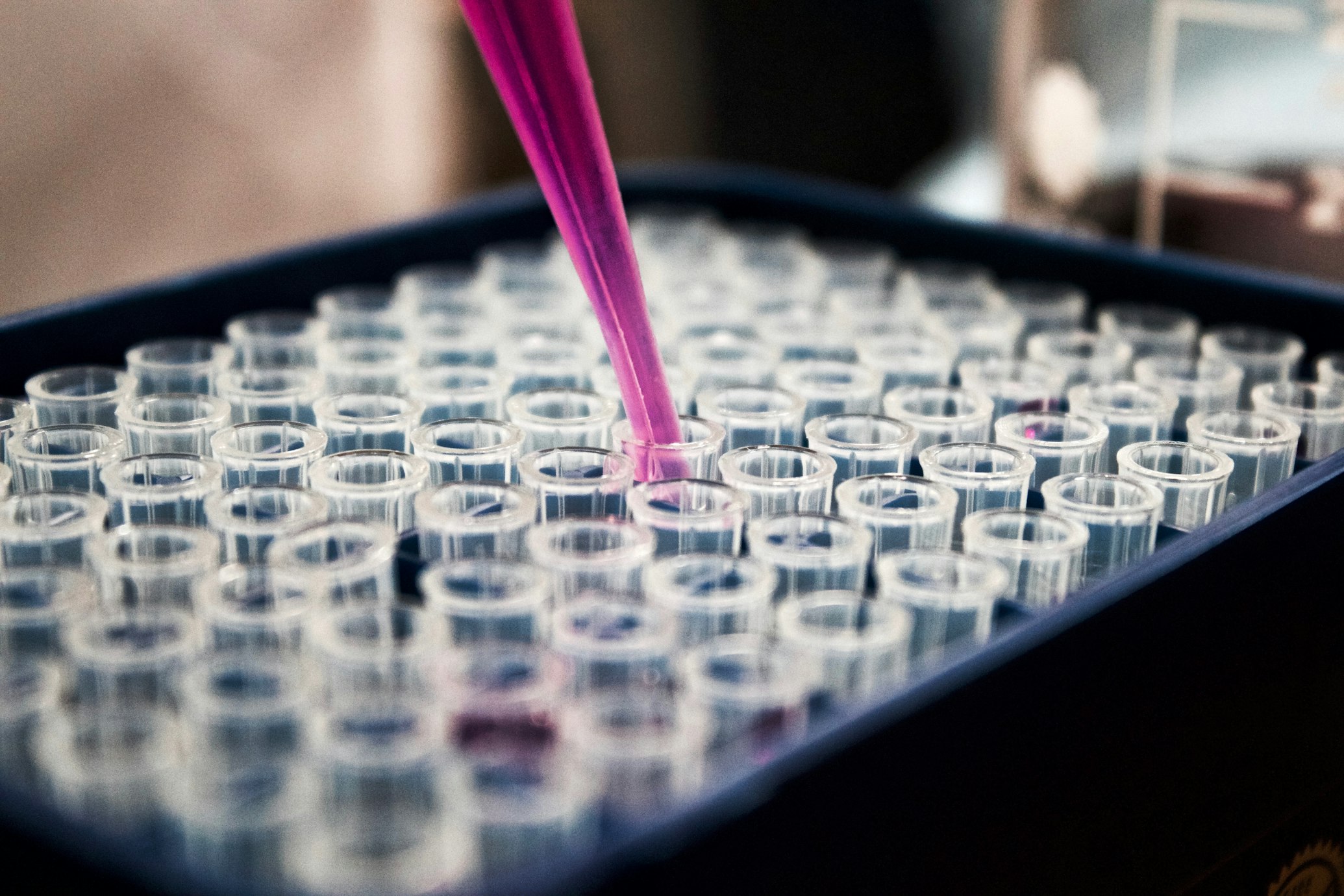Beyond Markovnikov: How Palladium Unlocks Hidden Pathways to Chemical Building Blocks
Discover the revolutionary palladium-catalyzed synthesis of primary alkyl halides through chain walking mechanisms
Article Navigation
The Alkyl Halide Paradox
In the molecular toolkit of synthetic chemists, primary alkyl halides are the versatile screwdrivers—indispensable yet surprisingly elusive. These simple molecules (R-CH₂-X, where X = Cl, Br, I) serve as launchpads for pharmaceuticals, agrochemicals, and polymers. Traditionally, synthesizing them involved a trade-off: either start with reactive, expensive precursors or accept messy mixtures from direct alkene halogenation, which favors branched "Markovnikov" products. The dream? Convert abundant, stable alkenes directly into linear alkyl halides with surgical precision.
Enter palladium catalysis—a field revolutionized by ligand design. Recent breakthroughs reveal how engineered palladium complexes can "walk" along carbon chains, bypassing traditional constraints to place halogens exclusively at terminal positions. This isn't just incremental progress; it's a paradigm shift enabling chemists to edit molecular skeletons with unprecedented control 1 6 .
Traditional Approach
- Markovnikov selectivity dominates
- Branched products form preferentially
- Requires harsh conditions
- Low terminal selectivity
Palladium Approach
- Anti-Markovnikov selectivity
- Linear primary products
- Mild conditions
- High terminal selectivity (>95%)
The Engine: How Chain Walking Defies Classical Rules
Rewriting Addition Chemistry
Alkenes react with H-X acids via Markovnikov's rule: the halogen attaches to the more substituted carbon. To achieve anti-Markovnikov outcomes (halogen at the less substituted end), chemists historically required harsh conditions or complex protecting groups. Palladium catalysis changes everything through a dynamic process called chain walking:
1. Hydropalladation
Pd⁰ inserts across the alkene's double bond, forming a Pdᴵᴵ-alkyl intermediate.
2. β-Hydride Elimination
The Pd-H bond reforms, but the double bond reappears one carbon away.
3. Migration
Steps 1–2 repeat, "walking" Pdᴵᴵ down the chain.
The Ligand Effect: Precision Steering
Chain walking is chaotic without molecular "traffic controllers." Modified pyridine-oxazoline (Pyox) ligands with strategic substituents prove decisive:

Without this hydroxyl, Pdᴵᴵ lingers at internal sites, yielding unwanted branched products.
Spotlight: The Decisive Experiment – Remote Hydrochlorination
Methodology: A Stepwise Blueprint
Liu's team demonstrated this using 4-phenyl-1-butene (Fig. 1). The protocol 3 5 :
- Catalyst Load: Pd(PhCN)₂Cl₂ (5 mol%), hydroxyl-modified Pyox ligand (6 mol%).
- Hydride Source: Et₃SiH (1.2 eq.) generates initial Pd-H.
- Chlorinating Agent: N-Chlorosuccinimide (NCS, 1.5 eq.).
- Solvent: Dichloroethane (DCE), 60°C, 12 hours.
- Omitting Pd → no reaction.
- Non-hydroxylated ligands → <10% yield.
- Alternative halogens (e.g., NBS) → primary bromides.
Results & Analysis
The reaction delivered 1-chloro-4-phenylbutane in 89% yield with >95% terminal selectivity. Key implications:
- Scope breadth: Worked for terminal/internal alkenes, heterocycles (furan, thiophene), and drug derivatives (e.g., ibuprofen).
- Chemoselectivity: Halogenation outcompetes reduction (a major side reaction without the ligand's H-bonding boost).
- Scalability: Gram-scale runs preserved efficiency.

Table 1: Substrate Scope for Remote Hydrochlorination
| Alkene Substrate | Product | Yield (%) | Terminal Selectivity (%) |
|---|---|---|---|
| 4-Phenyl-1-butene | 1-Chloro-4-phenylbutane | 89 | >95 |
| 5-Phenyl-1-pentene | 1-Chloro-5-phenylpentane | 85 | >95 |
| 4-Cyclohexyl-1-butene | 1-Chloro-4-cyclohexylbutane | 78 | 93 |
| (E)-1,2-Diphenylethene (trans) | 1-Chloro-1,2-diphenylethane | 76 | 90 |
| Eugenol derivative | Chlorinated eugenol | 68 | 91 |
Table 2: Ligand Structural Impact on Chlorination Efficiency
| Ligand Variation | Yield (%) | Primary Chloride Selectivity (%) |
|---|---|---|
| Standard Pyox-OH | 89 | >95 |
| Pyox (no hydroxyl) | 9 | 15 |
| Bulkier C6 substituent (Pr) | 92 | 96 |
| Electron-poor pyridine ring | 45 | 78 |
The Scientist's Toolkit: Reagents Enabling the Revolution
Table 3: Essential Components for Pd-Catalyzed Alkene Halogenation
| Reagent | Role | Why Critical |
|---|---|---|
| Pd(PhCN)₂Cl₂ | Palladium source | Forms active Pd⁰ species; PhCN dissociates easily |
| Et₃SiH | Hydride donor | Generates Pd-H initiator; silane byproducts benign |
| N-Chlorosuccinimide (NCS) | Electrophilic chlorine source | H-bond acceptor for ligands; avoids Cl₂ gas |
| Pyox-OH Ligand | Chiral controller | Enables terminal selectivity via H-bonding |
| 1,2-Dichloroethane | Solvent | Stabilizes Pd intermediates; polar enough for NCS |
Catalyst System
Pd(PhCN)₂Cl₂ with Pyox-OH ligand provides optimal activity and selectivity.
Hydride Source
Et₃SiH efficiently generates the active Pd-H species.
Halogen Source
NCS provides controlled chlorine delivery without side reactions.
Applications: From Drug Design to Petrochemical Streamlining
Drug Diversification
Primary alkyl chlorides serve as "handles" for cross-coupling. Liu's group functionalized ibuprofen and indomethacin alkene derivatives to install chlorides at metabolically resilient sites—extending drug half-lives 5 .

Future Frontiers: Where Can This Go?
1. Enantioselective Halogenation
Current methods yield racemic halides. Asymmetric Pyox ligands (used in oxygenations) could enable chiral alkyl chlorides 3 .
2. Beyond Chlorine
Extending to fluorination—pharma's holy grail—requires overcoming Pd-F bond stability issues.
3. Photoredox Hybrids
Merging Pd chain walking with photochemistry may unlock C-H halogenation at unactivated sites 5 .
Conclusion: Molecular Editing at the Terminal
Palladium-catalyzed alkene halogenation epitomizes how catalyst design transforms impossibility into routine. By taming migratory insertion with smart ligands, chemists now edit carbon chains like text—deleting, inserting, and appending halogens with precision. For drug innovators and materials scientists, this isn't just a niche reaction; it's a master key to molecular architecture.
